A wren chatters from the pussywillow, the yellow blossoms of St. John’s wort buzz with insects I can’t yet name, sunlight reveals texture on a nearby walnut tree: however my mood starts, after about thirty seconds outside, I feel better.
I have a similar response to the work of this month’s Twig & Ink guest. I met Shivani Shenoy through the Creature Conserve mentorship program, and was immediately drawn to her warmth, intelligence, curiosity, and creativity. These qualities—along with her cheerful color palettes and attention to detail—infuse her work with the excitement and focus I feel when I’m out in the natural world.
I hope you enjoy learning more about Shivani, and that you’re inspired to wander outside to see what’s happening, too.
Interview: Shivani Shenoy
What sort of work do you do?
I am an illustrator and visual designer from Bengaluru, India. I enjoy illustrating educational resources and picture books, designing outreach material for wildlife organizations, and making meaningful illustrations through painting, collage, photography or printing as part of my personal projects. My creative process involves inquiring, interpreting, and reflecting upon the world through visual storytelling.
What aspects of your work have personal meaning to you?
For me, illustration and photography have been lenses to closely observe the world—to see and make meaning of everyday life.
What gives me joy is going on walks, making observations and then illustrating them. I love to collect fallen leaves and flowers and press them between books to later study their forms through cyanotypes, photograph insects around me to observe patterns on their bodies, and look at birds to observe their behaviors. Simple things act as inspiration amid bustling Indian city life and I love to document it.
Observing nature and seeing beauty in the smallest forms of life fuels my passion for creating meaningful visual stories; to stir a sense of appreciation for the natural world that we co-exist with since I see a growing disconnect between the human world and the environment.
How are science, art, and writing part of your work, and how is the interaction between these areas important to you?
I believe science is a way of looking at the world through logic and reasoning that helps us understand why the world works the way it does. And art is a lens through which we can make meaning of the world by drawing connections, similarities and differences. It also becomes a storytelling medium to share observations and learnings from science in an accessible and interactive manner, especially in contexts of environmental education and outreach programs.
There’s also art in nature, and I have always been in awe when it comes to the design of different living beings that can be found at the intersection of art and science. For instance, the color and pattern an animal is adorned with can be associated with the way it camouflages or how certain forms of seed pods enable it to disperse its seeds uniquely.
Academically, I have also been curious about the intersection of nature and culture, specifically within Indian visual culture - motifs, stereotypes and beliefs seen in everyday life can tell us about communities and their relationship with nature and its evolution through the years.
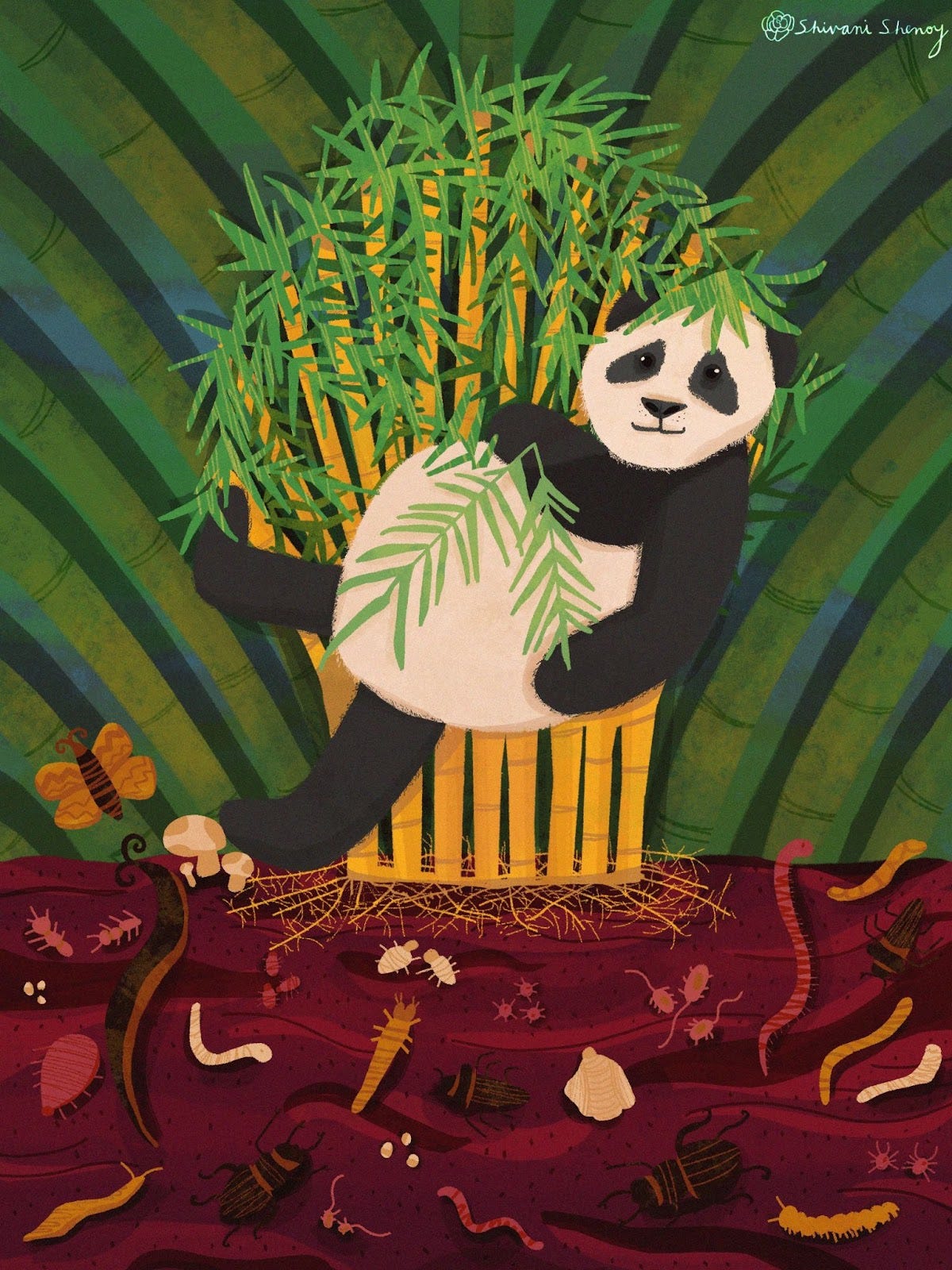
Could you talk a little more about your interest in Indian visual culture?
I started looking closely at the relationship between Indian visual culture and nature during a class during my undergraduate studies where we had to relate principles of ecological design to our creative practice, in my case, illustration and visual arts, for an essay.
Being an illustrator, I thought of analyzing not only nature-culture intersections depicted in Indian arts and crafts but also the image making process involved such as the use of natural dyes and paints derived from madder, turmeric, mineral stones and so on.
Later, as part of an internship with Current Conservation Magazine, I had the opportunity to share brief insights in the form of a social media series. Art forms such Gond, Warli, Madhubani have unique themes that showcase the community’s patterns of day to day life, co-existence with their environment and their beliefs. Some posts also traveled back in time to look at the documentation of wildlife in Bhimbetka rock paintings, figurines and seals of the Indus Valley civilization and natural history paintings from the Mughal era which tell us a lot about human and non-human relationships of that era as well as animals that are extinct today.
Presently, I’ve been curious to see depictions of wildlife in everyday life such as the contrast of wildlife murals against the concrete backdrop of a developing city like Mumbai or the use of humour in comics to talk about wildlife conservation and climate change.
Is there a particular scientific or environmental problem that feels important to you? What do you do about that?
India is a developing country with a rich biodiversity. As an urban dweller, I often think about how we could be more mindful about conserving green spaces for wildlife in our cities and find ways to co-exist with them. Does urbanization have to be at the cost of green spaces?
I especially love to look at urban ecosystems through birds since they connect air, land and water ecosystems. As a mentee of the Creature Conserve mentorship program, I created a picture book on Indian birds and their role in the urban ecosystem called ‘Neighbirdhood’. The book intends to spark curiosity about birds that one can observe around them and encourage nature journaling as a mindful practice of documenting these experiences. I have been interested in exploring how illustration and children’s literature can be tools for ecopedagogy—to build empathy and awareness about nature.
In the present information age, visual stories can be tools to break down complex socio-environmental causes and are a universal language to share ideas and emotionally connect with different people.
How have your experiences shaped your work?
I believe that my interest in the field developed as a result of my childhood experiences. My parents have always been enthusiastic about going on nature trails and wildlife safaris. When I was a child, we visited Pench National Park, in Madhya Pradesh, where I saw a family of five Bengal tigers. Seeing not one but five tigers was a surreal experience, and being in the same forests that are said to have inspired Kipling’s Jungle Book captivated my interest in learning more about the natural world.
My aunt, Usha akka, is an avid birder, painter and photographer who introduced me to a world of birds in our neighborhood when I was a teenager. Interactions with her inspired me to observe and photograph birds around me. It made me realize that the natural world is accessible and that you don’t have to travel to distant, designated spaces to experience it. I hear and identify birds when I’m at home or marvel at the butterflies fluttering through Bengaluru traffic.
What else influences and inspires you?
I often go on walks with bird-watching groups in Bengaluru, a community that enables me to learn about urban wildlife and photograph/sketch my observations. While birding, I feel a unique sense of connection to the world, whether it is keenly listening to bird songs or taking notice of the flowering and flowering trees changing with the seasons. I recently read an article by Ed Yong that summarized this joyous feeling while birding quite well.
Observing the loss of crucial habitats for wildlife due to deforestation and climate change deeply affects me. It invigorates my passion to express myself through visual storytelling. I believe that through meaningful art-sci collaborations and storytelling, an appreciation for nature can be nurtured, just as experiences exploring nature inspired my curiosity as a child.
Are you interested in collaborating with other groups or individuals on science-art-writing projects?
I love studying conservation at various intersections, such as science, education, law and literature, and use illustration to represent my insights visually. For instance, with Current Conservation magazine I had the chance to illustrate scientific writings and with the Center for Wildlife Studies, I had the opportunity to create educator guidebooks and modules for their environmental education program, WildShaale.
I would love to collaborate with other organizations and individuals involved in this field, to add an additional layer of visual design to their projects. Each project brims with new possibilities in terms of visual style explorations through different mediums, and also by novel ways of presenting information, and that excites me.
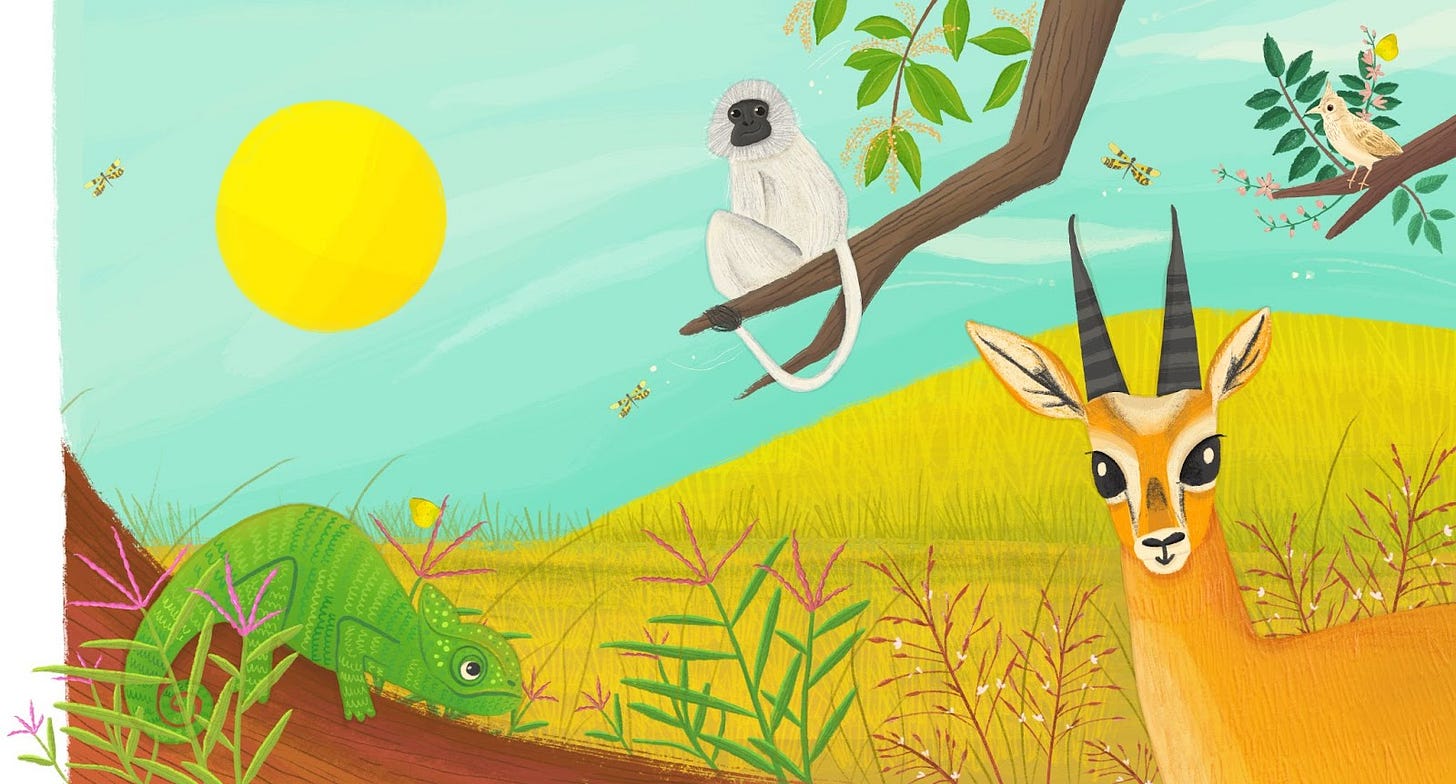
If you could have a day to hang out with anyone in history who would you choose, why, and what would you do together? (From Yvea Moore, 004)
I have always been fascinated by other artists and their creative processes. I’m a big fan of Emily Dickinson’s poetry and have read that she loved to garden and press flowers. I would love to go back in time and perhaps spend a day with her in her gardens, to draw and write with her. I'd love to observe how she saw the world and found the inspiration that fueled her poetry.
Thank you so much, Shivani!
You can learn more about Shivani and her work on Instagram and Behance. She’s also starting her own Substack, so please check that out, too!








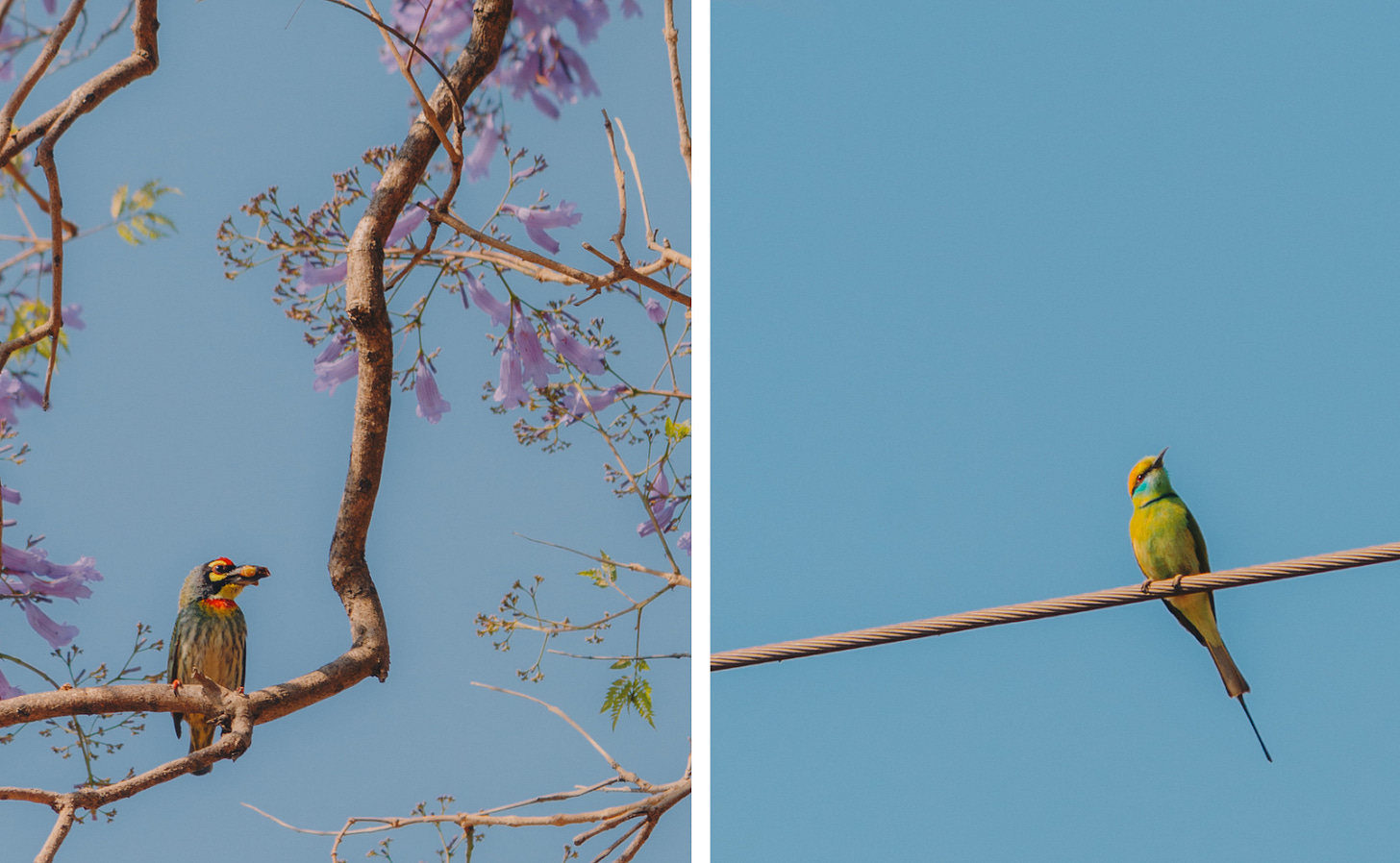
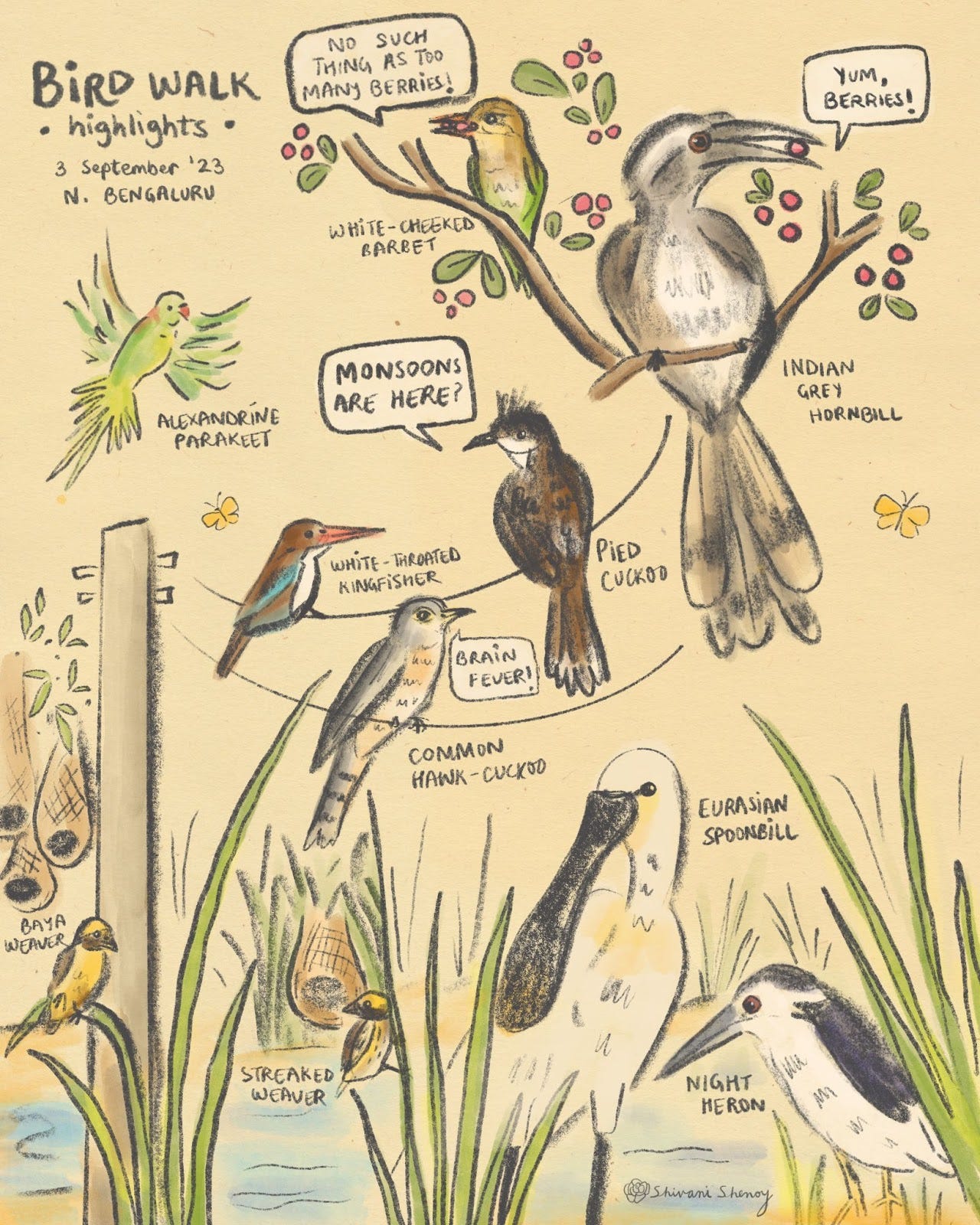
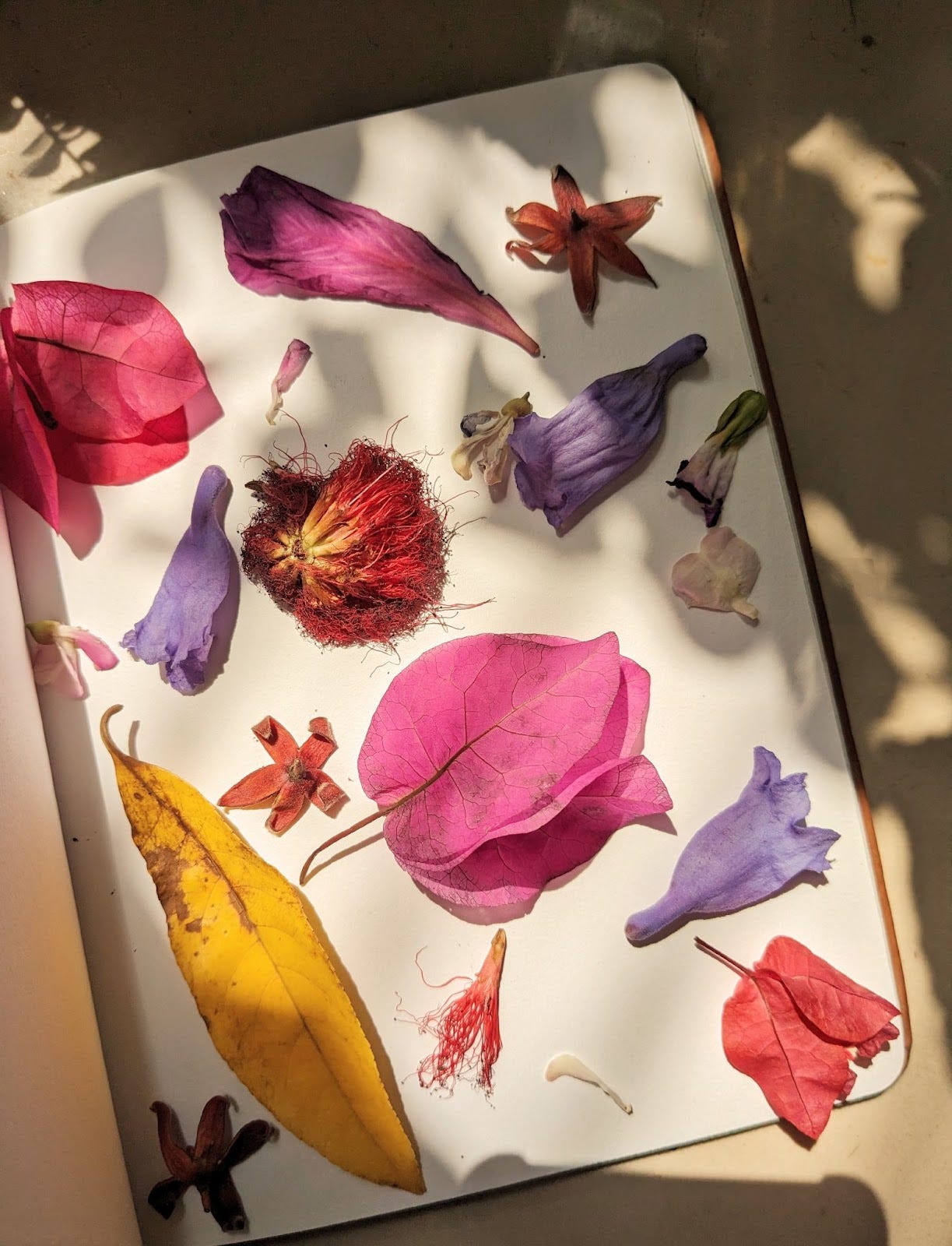

That's some amazing passion seen on your canvas Shivani! So excited to see more of your work in future!
I loved reading this interview! As an aging brother of her great grandmother, I am especially thrilled and proud to see the sincere interest and empathy Shivani has towards nature and how she is using her unique brilliant talents to make others aware and appreciate the importance of the natural beauty around us - particularly during these difficult times of ‘ disconnect between human world and environment’ , as she says.
I wish her great success and enjoyment in all her endeavors.